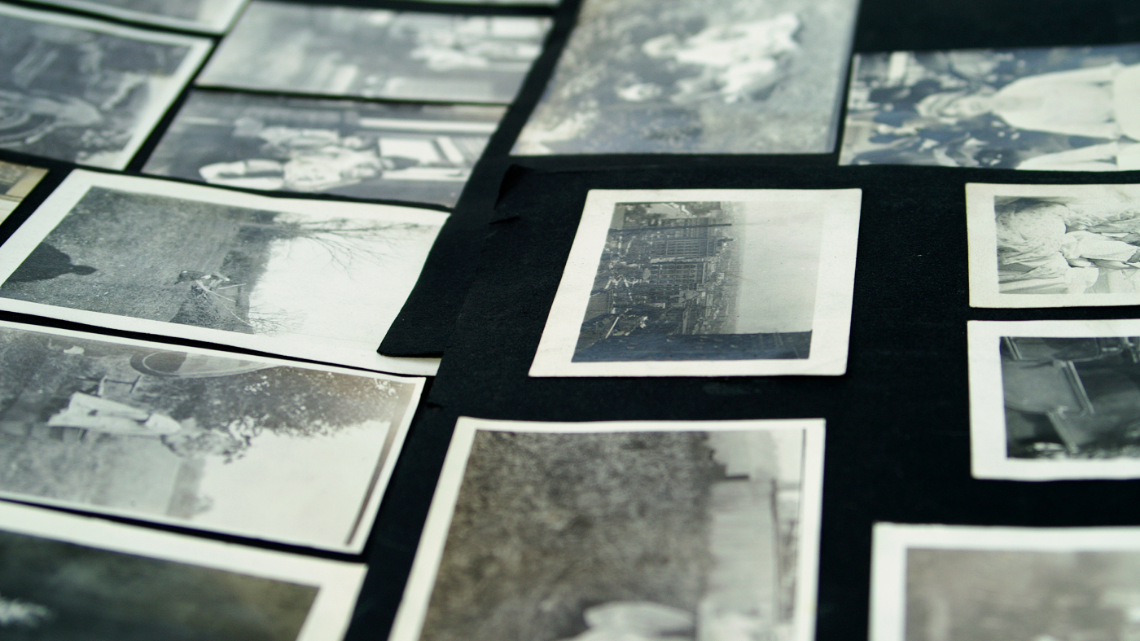Rescuing flood-damaged memories
Published 03 March 2022

Were your photos, tapes or precious documents damaged in the recent flooding? All is not lost. Here are some tips from our Local History experts on how to save flood-damaged items.
Safety comes first
Wait until flood-waters have receded and it is safe to retrieve your items. Always wear Personal Protective Equipment including eyewear and face mask as mould or other contaminants may be present.
What you’ll need
- Absorbent paper eg paper towels, butcher’s paper or blotting paper (make sure there are no prints on the paper as the colour may stain the object).
- Fans or portable dehumidifiers if you have power safely available.
- Plastic clothesline and pegs.
- An uncluttered table or flat surface, away from the disaster area.
- A large tub with clean, preferably distilled or deionised water.
- If you have access to a freezer, you can buy time by freezing water damaged items. See the State Library of Queensland’s guide on safely freezing water damaged items. You’ll need freezer bags or garbage bags.
Create the right environment
- Set up a dry space with good air movement and low humidity using your fan or dehumidifier, it should be dust free, cool, well-ventilated.
- Line your table or flat surface with absorbent material. Make sure to change the absorbent covering regularly.
- Do not use heaters or hair dryers as the heat can encourage the growth of mould or can distort certain items.
Prioritise
- Retrieve your items and sort into sodden, partially wet or unaffected, identifying which items are most precious to you. Precious and sodden items will be your first priority.
- Photos and films (including tapes and negatives) need to be actioned first. Paper and books can be frozen and treated later. Leave unaffected items in a safe dry space to address last.
Photos and negatives
- Do not touch the image surface.
- Gently separate wet prints if possible, remove wet negatives from plastic sleeves.
- Rinse gently with clean water to remove mud or dirt. Use a plastic board to support the photo and prevent unnecessary touching.
- Drain excess water and air dry immediately, image side up on your dry flat surface. Damp but not sodden prints can be pegged up to dry. Place the peg in the corner away from the image.
Films or tapes
- Do not play wet tapes or films.
- For older style film reels, unwind the film from its reel - holding the edge only. If the film resists unwinding, immerse in water with a small drop of dishwashing liquid briefly and then unwind carefully. Air dry by placing over a plastic clothesline in a dust free environment. Do not let the film overlap or it will stick together.
- For video or audio tapes that have been in dirty water, immerse in clean water to remove any debris. Remove promptly, open the flap on videotapes and place all tapes vertically with the opening at the base to drain.
Books or paper documents
These items can be frozen to deal with later. Once unfrozen, proceed as follows:
- Blot excess water.
- Separate glossy pages immediately so they don’t stick together, but avoid separating sodden papers until they dry enough to handle safely.
- Lay out separated documents on your lined flat surface to air dry.
- Stand books upright with the pages fanned out and allow to air dry. For books too sodden to stand safely, interleave absorbent paper every 10 pages, lie the book flat on an absorbent sheet, replacing sheets regularly until the book is dry enough to stand as above.
Back up your precious memories
Digitise your items as soon as possible to ensure you have a digital copy preserved. Moreton Bay Regional Libraries and Museums offer Preservation Stations at selected venues to allow you to digitise documents, slides, negatives, photographs and cassettes or VHS recordings.
Need more help?
The Local History team at Moreton Bay Regional Council can offer advice on conserving your photographs, documents, slides, negatives or books. You can also visit the State Library of Queensland website for more helpful information and videos on salvaging flood damaged items.